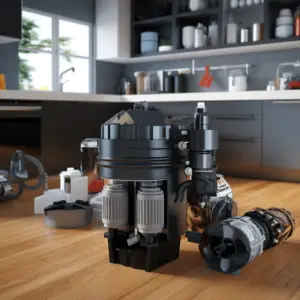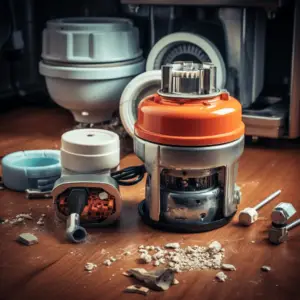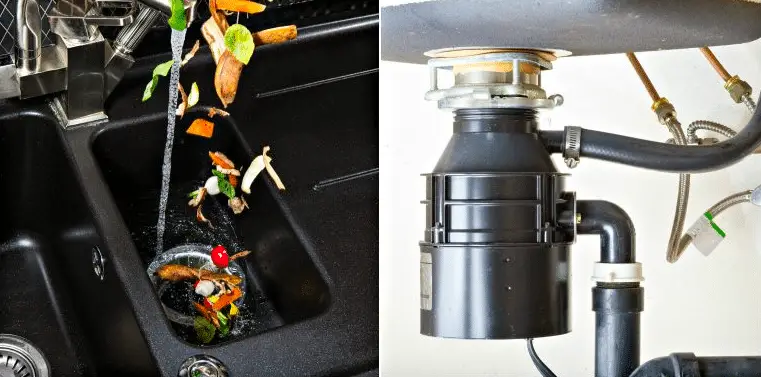GFCI Requirements, Electrical kitchen appliances consume a disproportionately high amount of power and therefore the protective measures needed to run a safe kitchen as well as a safe household, in general, must be implemented to the letter.
Table of Contents
Does garbage disposal need a GFCI?

The body mandated with the task of constantly reviewing and structuring these requirements is the National Electrical Code (NEC) and in line with its recommendations, garbage disposal does not need GFCI protection so installing a GFCI outlet for your garbage disposal is optional.
The NEC is a federal institution but the nuances of this provision can sometimes be informed by other factions such as your municipalities’ by-laws as well as by the manufacturers’ instructions.
In fact, the best-placed authority to guide your decision on this matter is the garbage disposal user’s manual.
That said, the NEC’s recommendation still stands, and in order to understand why it is important to understand garbage disposal as well as the purpose and functioning of GFCI outlets.
Garbage Disposal
Garbage disposal is an electrically powered kitchen appliance that is used to shred food waste so that it can pass through your plumbing to be deposited into a septic tank.
They are fitted under kitchen sinks to receive food waste.
Food waste contributes an excess of the waste generated in the home and when it is deposited in the trash, it burdens waste management systems since it is not easy, safe or, hygienic to handle the decomposing waste.
Food waste collected in trash ends up in a landfill but this creates a new problem. It cannot be incinerated in these quantities so it must be left to decompose.
The decomposition deposits large amounts of methane into the atmosphere which contributes to global warming.
GFCI or Ground Fault Current Interrupters
They are also known as Residual Current Devices (RCD) or Residual Current Circuit Breakers (RCCB)
The function of GFCI is to interrupt electrical current upon detecting a leakage to ‘ground’. This current interruption protects devices from electrical damage as well as protecting you from electrical shock.
GFCI protection works by detecting a difference or an imbalance between the supply and the return conductors of a circuit. If the sum of current running through the conductors is not zero, then there is a leak which is a potential electrical hazard.
GFCI Requirements takes less than one second of exposure to an alternating current of 120 volts at 20 mA or 0.02 amperes to induce cardiac arrest or at the very least trigger a cardiac event or an arrhythmia. Longer exposure could prove fatal.
This is the amount of power that runs some of your household appliances such as your fridge, garbage disposal, and washing machine.
Many of your kitchen appliances require 120-volt circuits making them a real hazard in the home. Microwaves, ranges, and heaters need even higher voltage to run.
Any meaningful protection especially against electrocution must detect a leak within less than 40 milliseconds.
GFCI outlets can detect a leak as small as 5mA within less than 30 milliseconds making GFCI an essential part of the larger electrical subdiscipline, Automatic Disconnection of Supply (ADS).
GFCI protection is not the same as a fuse. A fuse detects current overload, not a small leakage.
The amount of current it takes to trip a fuse could be thousands of times what a GFCI is able to detect. A fuse is therefore useless at protecting you from electrical shock.
Where to place or find GFCI outlets
There are some basic rules to adhere to in terms of placing GFCI outlets or where you may expect them to be.
- GFCI is required for all easily accessible outlets and those that are frequently used.
- In the kitchen, any outlets that are used above or on the counter must be GFCI outlets.
- Any outlets that are used in or around wet areas or areas prone to contact with water such as the sink area, and any outlets that serve hand-washing sinks and bathrooms must be GFCI circuits.
- GFCI protection should be fitted where the voltage of the socket is 120 volts and an amperage of 20 amperes and above.
Why garbage disposal does not require a GFCI outlet

To begin with, garbage disposal requires a receptacle that supplies 120 volts at 15 amperes or more so on this count it qualifies for GFCI.
- It is exempt because garbage disposals are placed under the sink which means they are accessed infrequently and in many cases never except by an electrician. In other words, it is not a countertop appliance.
- Garbage disposals do not come into contact with water such as is the case with a water heater, a coffee maker, or a range. The chances of getting electrocuted by a garbage disposal appliance are minimal.
- The initial load needed to start a garbage disposal machine is rather high and flows suddenly followed by a fall where it stabilizes.
This process could easily create the very small imbalance necessary to trigger a GFCI which means it may break the circuit and cut power to the house unnecessarily. Fitting the garbage disposal with GFCI could be counterproductive.
Garbage disposal
- GFCI protection is not needed where the device is placed on a dedicated circuit or a hardwired connection which is what is recommended for garbage disposals.
- A hardwired connection is where a device is connected directly to the power of the house via the junction box.
- A dedicated circuit is where the electrical device is plugged into a socket that is designated for just that one device and is not shared with any other device. More commonly, a dedicated connection is what is recommended and best serves garbage disposals.
- Typically, a dedicated circuit also has its own circuit breaker indicated specifically for a particular device. Fridges, washing machines, and dishwashers also function on dedicated circuits and while they may at times also be fitted with GFCI protection, they do not have to since the plugs are rarely accessed to switched on and off all the time.
Finally…
Garbage disposals do not meet all the requirements for GFCI protection and in some cases, a GFCI outlet for garbage disposal could become an obstacle.


